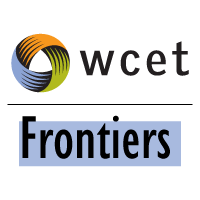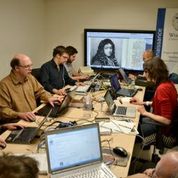February 26, 2014
New regulations and reporting requirements to help battle federal financial aid fraud for institutions that offer distance education are coming. No doubt, additional protections are needed tools to combat financial aid fraud. The distance education community needs to be part of the solution. However, the remedies need to be tempered so that they do not harm innocent students or cause excessive burdens for institutions to comply.
On Tuesday February 25, the U.S. Department of Education’s Office of Inspector General (OIG) released the Final Audit Report: “Title IV of the Higher Education Act Programs: Additional Safeguards Are Needed to Help Mitigate the Risks That Are Unique to the Distance Education Environment.” This is an extensive report that is the culmination of much research and analysis by the OIG.
If the distance education community wishes to have any input on this issue, we need to act fast. In the cover letter, the OIG states that: “Department policy requires that you develop a final corrective action plan (CAP) for our review…within 30 days of the issuance of this final audit report. The CAP should set forth the specific action items, and targeted completion dates, necessary to implement final corrective actions on the findings and recommendations contained in this final audit report.” That’s not much time. Since the Department had a chance to reply, I fear that their response may be already formed.
There is much detail in the report. I will focus on the recommendations and provide my initial thoughts.

Finding No. 1 — Regulations Related to Verifying Student Identity and Disbursing Title IV Funds Should be Strengthened.
Recommendation 1.1: Develop regulations…specifically requiring schools that offer distance education to establish processes to verify the student’s identity as part of the enrollment process.
Strengthening the initial identity verification process makes much sense. WCET supports technical suggestions made by EDUCAUSE in May 2012 regarding “identity verification” practices. Their comments include concerns about mandating certain practices and raises the concerns about requiring distant students to physically appear at specific locations. EDUCAUSE provides good advice on possible options.
1.2: Work with the OIG to implement audit requirements for the regulations promulgated under Recommendation 1.1 for independent accountants, not accrediting agencies, to assess the effectiveness of schools’ processes for verifying student’s identity.
While the report specifically states that the responsibility for Title IV compliance lies with the Department, this is the first of some odd detours that the OIG takes into examining the processes employed by accrediting agencies and states in overseeing students for Title IV compliance purposes. Not surprisingly, neither accrediting agencies or states check for adherence to federal aid rules.
The report says that accrediting agencies are required to have their schools “establish processes to ensure that the student who registers in a distance education course or program is the same person who participates in and complete the course or program and receives the academic credit.”
The report says that “this requirement is not sufficient to protect Title IV funds.” I agree it is not. But that should not be surprising since that is not what that requirement was intended to do!
The requirement on accrediting agencies is in relation to academic integrity (preventing academic cheating or plagiarism on assessments) and is NOT about fraud (deliberate attempts to steal money). In my testimony to the Department on this topic last year, I urged them not to confuse financial aid fraud with academic integrity. That is exactly what has happened in this part of the OIG’s report. My worry is that the conflation of these two issues may result in additional burdens when institutions assess student performance. Such a quality issue is appropriate for accrediting agencies to address and is a separable issue from deterring financial aid fraud.
Let me use banking as an example. When I open an account with a bank, I must supply several pieces of evidence about my identity. After I have an account, I can go to the teller and use the account as long as I have the account number (which I could have stolen) and my driver’s license (even though if could be easily forged and states are quick to claim that these licenses are not proof of identity). My point is that there is a greater level of scrutiny for the initial transaction (applying to a college and for financial aid) than there is day-to-day transactions (taking a test). Let’s not conflate the two activities..
1.3: Revise the regulations to require more frequent disbursements of Title IV funds. The disbursements should coincide with the timing of institutional and other educational expenses, such as monthly child or dependent care and Internet expenses.
Such a requirement should not be limited to distance education students. If they do, the fraudsters will sign up for one face-to-face course and get around it. Oh yes…and it is not fair to punish the innocent for the sins of the fraudsters.
Some prior suggestions to combat fraud included conducting assessments earlier in each class. Actually, there is probably some sound pedagogical (as well as financial) basis to this. However, we must also guard against being too prescriptive in setting the timing of each faculty person’s syllabus as a fraud deterrent.
Finding No. 2 — Current Regulations Defining Attendance at an Academically Related Activity Should Also Apply to Student Eligibility and Disbursement Requirements.
Recommendation 2.1: Amend the regulations for disbursing Title IV funds to cross-reference the definitions of “academic attendance” and “attendance at an academically related activity in 34 CFR §668.22(l)(7).
2.2 Issue further guidance that clearly explains what is considered acceptable evidence to support a distance education student’s academic attendance and last date of attendance.
A few years ago, we joined several other organizations in fighting the “last date of attendance” rules for distance education. If a student disappeared without formally withdrawing, a higher standard was set for distance classes than for on-campus classes. Students we treated unequally. We lost.
I agree that these regulations are not well known and that the above recommendations make sense. In my testimony to the Department last year, I suggested that an education program about fraud might be a better deterrent than anything else that was suggested. If faculty and front-line administrators know what they are looking for, they can identify suspicious behavior before the crime takes place.
Education about the regulations is one step, but is not enough. Those interacting with students every day need to know the tell-tale signs of a fraudster, thus creating a more effective early-warning system.
Here’s the big problem with the implementation of the requirement to have “evidence” of “academic activity as it now stands…it requires a MASSIVE amount of data collection on EVERY distant student. The institution is expected to demonstrate participation in an “academic activity” (logging in does not count) for students who do not formally withdraw. Because you don’t know who will drop out, every test, quiz, paper, discussion, or similar activity would need to be saved. Ouch. That’s lots of effort! I’ve yet to see any acknowledgement of the incredible cost and effort that fully implementing this regulation would require.
Finding No. 3 — Cost of Attendance Components for Distance Education Students Should Be Revised
Recommendation 3.1: Work with Congress to amend section 472 of the HEA to specify that a school’s cost of attendance budget for a student include only those costs that reflect actual educational expenses.
3.2: Provide guidance to schools explaining (1) that a distance education student’s cost of attendance budget should not include expenses that he or she most likely will not incur, and (2) pursuant to section 484(l)(2) of the HEA, a school’s financial aid officer can exercise professional judgment on a case-by-case basis in accordance with section 479A of the HEA and reduce a student’s Title IV aid amount if the financial aid officer determines that distance education results in a substantially reduced cost of attendance for the student.
There has been more than one attempt to exclude “living expenses” or “miscellaneous expenses” from the calculation of aid eligibility for distance students. Their thinking is that the student is staying home, so why do they need living expenses? I’ve yet to hear them apply that same thinking to students who commute, but the argument is exactly the same.
Last year, I wrote a strong opinion about how a proposed reduction in the ability to include housing, computer, and living expenses in the Pell Grant calculations was unfair. The neediest students are those who are hurt the most. The American Association of Community Colleges also fought this recommendation.
On the other hand, OIG did make some great points. In their analysis, the OIG found two colleges that were routinely including “commuting expenses” into the aid eligibility calculations for distance students. They just used the same criteria for all students. That should not be the case.
I can see removing or lessening the student’s “costs” so that they “reflect actual educational expenses.” The report hints at limiting the student’s eligibility to only the costs of tuition, fees, and books, but the language in their recommendation is softer. If they allow for real student costs, these are reasonable recommendations. If they wish to cut distant student aid eligibility dramatically, then I oppose the recommendations.
You can stop bank robberies, by closing all the banks. Trying to stop financial aid fraud by punishing innocent students is bad policy.
Finding No. 4 — FSA Could Improve Its Monitoring of Schools’ Compliance by Targeting Its Reviews on High Risk Areas
Recommendation 4.1 (to the Chief Operating Officer for FSA) — Ensure the sampling methodology for program reviews includes testing of samples of students selected from specific high-risk areas, such as distance education, identified during its annual risk assessment.
4.2: Analyze the results of program review conducted using the 2011 version of the review guide to determine whether program reviews are consistently identifying academic attendance issues related to the distance education environment. If the program reviews are not identifying attendance issues, research, why and, if necessary, revise the guide and provide training to staff.
After another detour to examine the processes of the accrediting agencies and state regulators, the OIG turned its attention back to the only agency that can really oversee federal financial aid compliance…the Department of Education. After highlighting some shortcomings in the Department’s review process, these recommendations make much sense.
Finding No. 5 — More Useful Data on Distance Education is Needed to Adequately Assess Risk and Direct Monitoring Efforts.
Recommendation 5.1: Collect data that helps Department policy makers and program managers better understand the characteristics of the distance education environment; monitor growth in distance education as it relates to Title IV funds, programs, and student population; assess risks specific to the distance education environment; and formulate strategies to address the risks identified.
5.2: Incorporate the data into FSA’s risk assessment process.
Earlier this year the Department of Education released the first IPEDS data on distance education in over a decade. It had previously been cut as a cost-saving measure. The lack of data proved to be more expensive to the Department as it was hampered by not knowing what it did not know.
These recommendations will place an additional burden on institutions, but I think it will be worth it to better inform and target fraud prevention activities. It will also better inform federal policy on distance education in general. Let’s make sure that the burden is appropriate to what is needed.
Conclusion
This is a thoughtful report and I recommend that those on campus who are charged with combating financial aid fraud read it.
The report is focused on combating fraud. Some of the recommendations would punish innocent students and/or place a terrific burden on institutions. Some recommendation make perfect sense. Let’s all stay in the discussion to drive it in the proper direction.
As a panelist on the current Program Integrity Negotiated Rulemaking committee for the Department of Education, I’m a bit confused not one of the issues that is being considered. It was included in announcements about the formation of this panel, but not chosen as one of the final issues for the committee.
I wrote this analysis in a short period of time and apologize for any errors. My analysis is was based on a history of following these issues.
Next Steps
I’ve not come to a complete conclusion on what next steps should be. As a start, alert the leadership of your institution that new rules could emerge quickly and some of them might not be pretty. If your institution has lobbyists, make sure that the Department and your Congressional delegation know that a conversation with the colleges is still needed prior to wholesale adoption of these recommendations. Be prepared to act.
Finally, let me reiterate that we should all be in the business of helping the Department battle against those stealing money that is earmarked for needy students. This is a reprehensible crime. We will need to do some work to help in this fight and eschewing more work cannot be our only objections. Be prepared to help.
Russ
Russell Poulin
Interim Co-Executive Director
WCET – WICHE Cooperative for Educational Technologies
rpoulin@wiche.edu
If you like what we do, support our work by becoming a WCET member.
Photo credit: Morgue File.
















